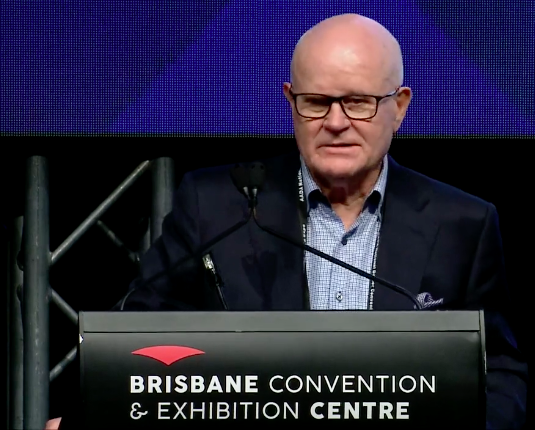
Chair David Blackhall summarised the mission of the board of the Australian Automotive Dealers’ Association at the 2022 convention. This is an abridged version of his opening remarks.
The AADA board believes simple is best, so we try to handle our good stewardship responsibilities under three headings: strategy, solvency, and existential risk.
The key questions we seek to answer look like this:
Strategy. What must we do to help retailers prepare for a long-tail COVID economy that might involve permanent work-from-home and other ways to handle COVID-related staff absences? What policy settings need adjustment?
Solvency. How should AADA work with OEMs, finance companies and other partners so that members remain profitable and viable in the face of price inflation, rising interest rates and recessionary risk?
Existential risks. How do we help dealers avoid the kinds of shocks to business viability that we’ve seen as changes have been introduced to the franchise model.
Outside of these broad categories, how can the board guide the secretariat to solutions on the everyday issues that beset dealers.
Here’s an incomplete list:
Net migration, 457 visas. Given the difficulty of finding and training sufficient staff, what’s our policy?
What can be done about the inordinate order banks that have resulted from broken supply chains?
How do we influence policy to address inadequate numbers of apprentices entering the workforce?
What should we do to help dealers with the significant upskilling needed for BEV sales and servicing? In Britain, the NFDA runs a specific program.
What about data policies? The ACES challenge makes data king.
And perhaps the most challenging of all: what is our position on changes to the distribution chain via the omni- channel model including agency, its variations, and its implications?
This incomplete list of open questions gives you an idea of the breadth of issues the AADA board must consider.
A board sub-committee has completed an updated and more contemporary strategy statement.
Another sub-committee is developing a draft vehicle data-sharing protocol.
The secretariat will roll these out to members when they’re ready.
At our convention more than four years ago we first talked about a trifecta of persistent challenges for franchised new car dealers.
They were: digital disruption, margin compression, and regulatory intervention.
Digital disruption has exploded everywhere in our businesses. New customer-facing retail tools, internet enabled connected cars, social media influencers replacing traditional advertising, B2B wholesale platforms, paperless sales transactions, seamless bricks and clicks F&I processes are all touched by digital innovation.
Margin compression has continued apace.
Emerging omni-channel distribution models, including agency, target cost reductions in the distribution chain.
Sure, there may be a customer satisfaction dividend – and even accepting the assertion that customers are demanding agency arrangements, it’s disconcerting that the models we’ve seen so far, all have one common first step: they cut your margin.
AADA’s mission is to achieve balanced and equitable policy outcomes
that protect our interests and drive profitable long-term business results.
To do that we need to be prepared and we must propose bold solutions.
I have a dream that as our new Government acts on its high-level policy priorities, we can find a new united voice for the automotive industry.
I have a bold dream that we can by unifying our efforts, achieve optimised outcomes.
We must work with the manufacturers and distributors. But most importantly, we must first work better with each other.
At a recent gathering i sounded out the key industry leaders we’ll need to
commit to forging a united voice to regulators and legislators, both federal and state.
I’ll point to AASRA as a useful model – many of you will never have heard of it.
AASRA is the Australian automotive service and repair authority – an authority created by the Government to enable the orderly, fair, equitable, and affordable sharing of vehicle service and repair information by and for all industry participants.
AASRA is a great example of what might be achieved with commitment and joint effort.
That progress saw us join hands with the eight key industry organisations – all the MTAs, the VACC, the FCAI.
An important future topic will be plug- in BEVs.
Given the mix of our electricity grid in the practical medium term HEVs win easily. We need policy settings that consider total CO2 data before we get too far down the BEV rabbit hole.
Our board has an obligation to craft strategy and maintain solvency, but the key to our members’ prosperity and growth is to ensure existential risk is identified and mitigated wherever possible.
I believe that identifying, evaluating, and mitigating risk is the most valuable contribution directors can make to any organisation.
That’s why we need a clear articulation of a unified position on important policy issues.








